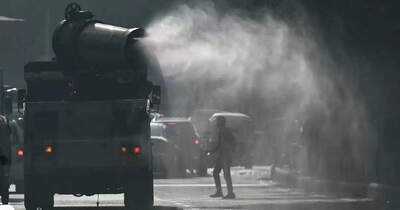
As of 11:06 AM on Sunday, 23 out of 39 air quality monitoring stations in Delhi reported Air Quality Index (AQI) readings exceeding 400, which is classified as 'severe', according to the Sameer application that provides real-time updates from the Central Pollution Control Board.
The overall AQI for Delhi was recorded at 389, categorizing it as 'very poor'.
Areas with the highest pollution levels included Bawana (441), Rohini and Jahangirpuri (434), Mundka (431), and RK Puram (422).
On Saturday, the average AQI at 7 AM was 335, also falling into the 'very poor' category, as per the Central Pollution Control Board's data.
The AQI scale indicates that values between 0 and 50 represent 'good' air quality, while 51 to 100 is 'satisfactory', and 101 to 200 is 'moderate'. As the index rises, air quality worsens, with 201 to 300 indicating 'poor', and 301 to 400 signifying 'very poor'. Values between 401 and 450 denote 'severe' pollution, and anything above 450 is classified as 'severe plus'.
During winter months, air quality in Delhi tends to decline sharply, often ranking it as the most polluted capital globally.
Factors contributing to this crisis include stubble burning in Punjab and Haryana, firecracker usage, vehicular emissions, lower temperatures, reduced wind speeds, and pollution from industries and coal plants.
Since mid-October, the air quality in the capital has consistently been in the 'poor' or worse categories, prompting the implementation of additional anti-pollution measures under the Graded Response Action Plan.
In response to the escalating pollution levels, Chief Minister Rekha Gupta announced staggered working hours for Delhi government employees and the Municipal Corporation of Delhi, effective from November 15 to February 15.
During this period, Delhi government offices will operate from 10 AM to 6:30 PM, while municipal corporation offices will function from 8:30 AM to 5 PM. Currently, government offices operate from 9:30 AM to 6 PM, and the municipal corporation from 9 AM to 5:30 PM.
The Delhi government noted that the existing 30-minute overlap in working hours between the two organizations contributes to significant traffic congestion during peak hours, exacerbating air pollution.
Adjusting work hours aims to distribute traffic more evenly and mitigate pollution levels.